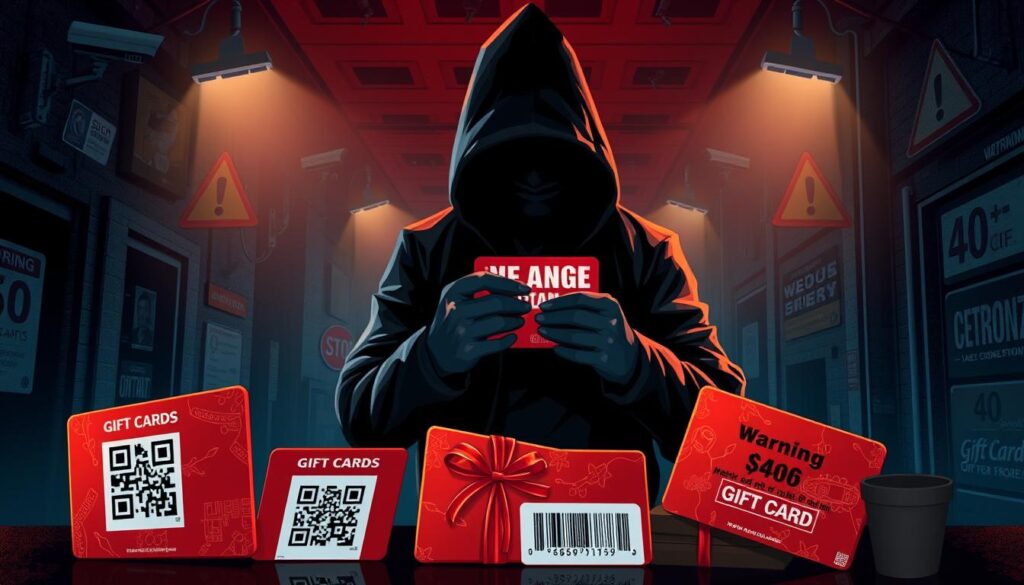Americans lost $351 million to fake prize schemes last year, with fraud reports surging across all age groups. Even digitally-native millennials reported $2.7 billion in total fraud losses during 2024. Criminals now use artificial intelligence tools to clone voices, fabricate documents, and bypass traditional security measures.
Today's deceptive practices go beyond suspicious emails. Fraudsters create urgency through manipulated social media videos and personalized phishing attempts. They exploit trusted platforms like Facebook Marketplace and WhatsApp to appear legitimate while demanding untraceable payment methods.
This guide details emerging patterns in fraudulent prize operations, including fabricated government affiliations and fake celebrity endorsements. You'll learn to recognize manipulated content, verify unexpected prize notifications, and secure sensitive financial information. We analyze real-world examples of payment red flags and social engineering tactics used in recent cases.
Key Takeaways
- Prize-related fraud costs consumers millions annually, with losses increasing yearly
- Modern scammers use AI-generated content to enhance credibility
- Urgency and emotional manipulation remain core tactics
- Gift cards and cryptocurrency requests signal potential fraud
- Verification processes help identify legitimate business services
Understanding the Landscape of Sweepstakes Scams

Fraudulent prize schemes have evolved into multi-stage operations designed to bypass skepticism. Criminals now use personalized approaches, often combining fake credentials with psychological triggers to pressure targets.
Common Tactics Used by Scammers
Fraudsters initiate contact through unexpected congratulatory messages about grants or prizes. These arrive via texts, social media DMs, or spoofed emails mimicking legitimate businesses. One recent tactic involves spoofing real employee names from companies like Publishers Clearing House to build trust.
Scammers escalate interactions by offering tiered reward options. Victims might select between "$35,000 after $850 fees" or "$200,000 for $3,500 upfront." This creates false control while masking the financial trap.
Overview of Red Flags: Gift Cards, Upfront Fees, and More
Requests for gift cards remain critical warning signs. Fraudsters demand specific brands like Amazon or Walmart, instructing victims to scratch codes and send photos. These payments disappear instantly, leaving no recourse.
Additional fees often follow initial payments. One Arizona resident reported being charged $1,200 for "government paperwork" after sending $2,150. Such charges always claim to be refundable but never materialize.
Key Warning Signs and Red Flags to Watch Out For
Scammers exploit trust in digital communication to launch sophisticated attacks. Their methods often blend psychological manipulation with fake documentation, making fraudulent offers appear credible at first glance.

Unsolicited Messages and Financial Information Requests
Genuine prize organizations never request bank account details or credit card numbers through random texts or emails. One victim reported, "They sent a congratulatory text message claiming I’d won a vacation, then demanded my Social Security number for 'tax purposes.'"
Watch for these patterns:
- Messages from unverified numbers or addresses
- Requests for immediate personal information
- Claims that you "must act within 24 hours"
Recognizing the Gift Card and Fee Traps
Legitimate businesses don’t demand payments via gift cards or cryptocurrency. A recent FTC alert states:
"No government agency or reputable company will ever ask you to pay fees with retail gift cards."
Scammers frequently escalate demands after initial payments. What starts as a $50 "processing fee" often balloons into thousands for fictitious charges like "insurance bonds" or "international transfer costs."
Always verify offers through official channels before sharing account details or making payments. Contact the organization directly using verified phone numbers or websites—never use links provided in suspicious messages.
How to Avoid Sweepstakes Scams in 2025
Have you received an unexpected prize notification? Start by asking one critical question: Did I enter this contest? Legitimate winners always participate first. Keep a dedicated record of every sweepstakes you join—note entry dates, methods, and rules. This simple habit helps spot fake claims instantly.
Verifying Prize Legitimacy Through Official Channels
Contact organizations directly using contact details from their official website—never use links or numbers in suspicious messages. Reputable businesses like Publishers Clearing House notify winners through formal mail or in-person visits, not urgent texts. A Federal Trade Commission representative states:
"Authentic promotions won’t demand payment or sensitive data to claim prizes."
Steps to Confirm the Authenticity of Sweepstakes Offers
Examine communication details carefully. Check email domains and phone area codes for mismatches with the company’s verified information. Cross-reference offers on the organization’s social media pages or press releases. Use the Better Business Bureau’s scam tracker to verify questionable claims.
Advanced verification methods include reverse-searching prize images. Many scammers reuse stock photos across fake promotions. Legitimate sweepstakes provide clear terms and never rush decisions—take time to consult trusted advisors before responding.
Protecting Your Financial and Personal Information
Modern financial safety demands proactive defense strategies. Criminals increasingly target bank accounts and personal information through sophisticated scams. Staying protected requires understanding how to lock down sensitive data and respond effectively to threats.
Guarding Bank Accounts, Credit Information, and Personal Data
Treat banking details like house keys—never share them with strangers. Central Pacific Bank confirms: "We never ask for passwords or account numbers in unsolicited messages." Freeze credit reports through Equifax, Experian, and TransUnion to block unauthorized loans.
Essential security steps include:
- Enabling transaction alerts for all savings and checking accounts
- Using unique passwords for financial services
- Shredding documents containing identity details
Utilizing Reliable Resources and Reporting Scams
The Federal Trade Commission handles 1.4 million fraud reports annually. Their recovery portal IdentityTheft.gov provides customized action plans for compromised data. A spokesperson notes:
"Reporting within 24 hours increases recovery success rates by 63%."
Always contact local FBI field offices for organized fraud schemes. Publishers Clearing House maintains a dedicated scam report form to combat impersonation. Financial institutions recommend quarterly credit checks through AnnualCreditReport.com.
Conclusion
Staying ahead of financial predators requires constant vigilance in today’s digital landscape. Legitimate sweepstakes operators never demand wire transfers or gift cards as payment for supposed fees. Always verify unexpected prize claims through official government websites or direct customer service channels.
Protect your money by recognizing modern fraud patterns. Scammers often pressure victims with urgent deadlines or fake legal threats. Remember: authentic services won’t request sensitive banking details through social media messages or unsecured platforms.
Use trusted resources like the Federal Trade Commission website to report suspicious activity. Share questionable offers with family members to create community awareness. Financial institutions recommend enabling two-factor authentication for all payment accounts.
Your security depends on combining smart verification habits with updated knowledge about evolving scams. Trust instincts when offers seem unrealistic, and maintain regular communication with credit monitoring services. These strategies form the strongest defense against sophisticated fraud attempts.
